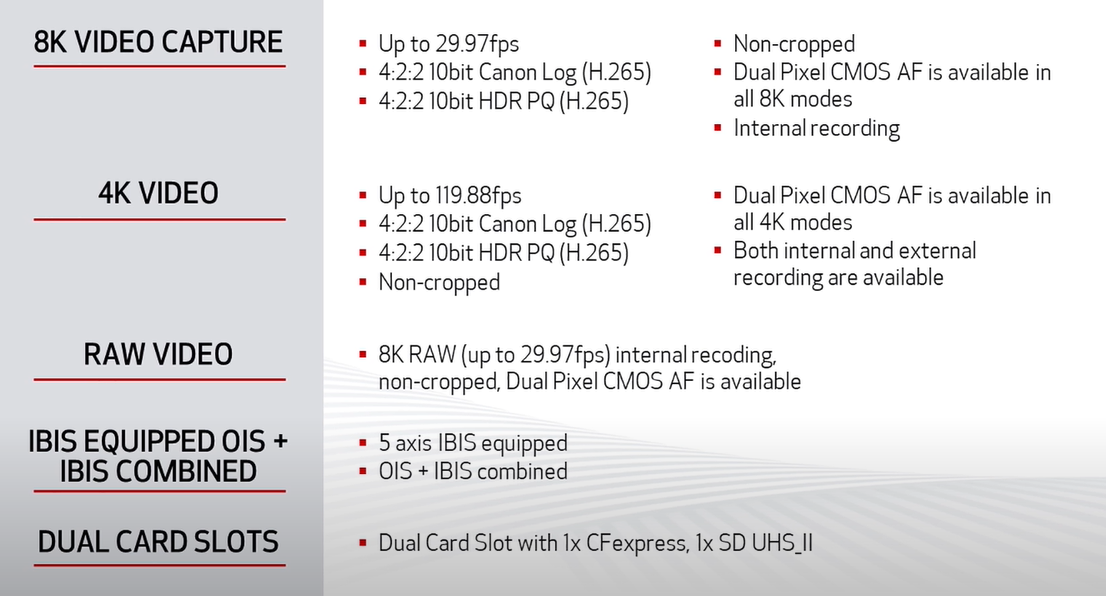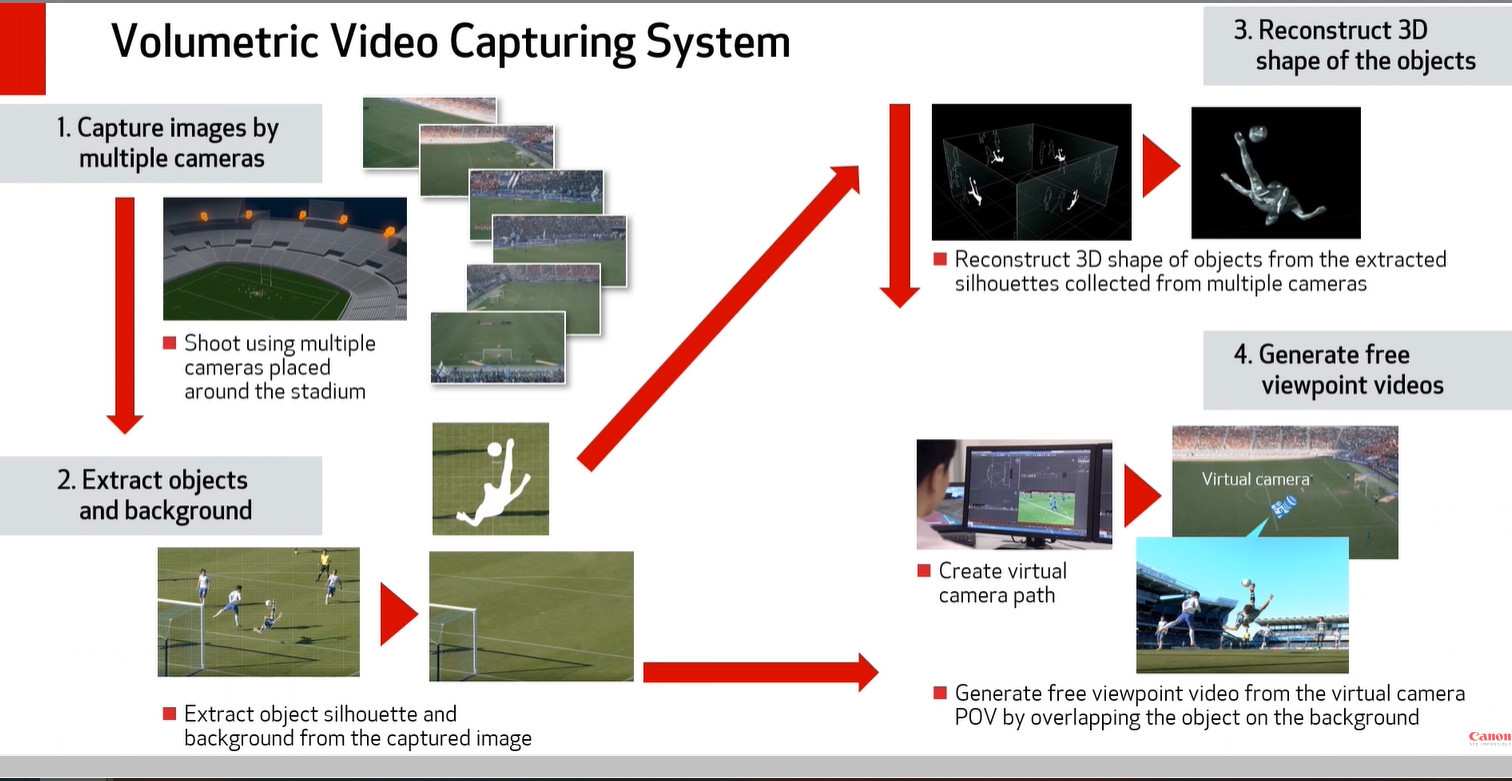Canon held a virtual press conference to disclose what they would have shown at NAB had it gone forward as usual. While much of the event focused on professional camera updates, I will focus on three items more of interest to Display Daily readers, as the headline suggests.

In professional monitors, no new products were announced but there were improvements disclosed. For example, the 24” DP-V2411 and the 17” DP-V1710 and 1711 all improved their black level performance from 0.005 nits to a very impressive 0.001 nits. The VP 2411 improved its peak luminance from 600 to 1000 nits while the 17” versions improved their full-screen white luminance from 300 to 600 nits. All now offer a 1M:1 contrast. The improved black level is a free upgrade but the luminance upgrade requires a software license. These are all dual-panel type monitors.

In terms of more free firmware upgrades, these monitors now support the use of 1D and 3D .cube LUTs directly loaded via a USB port without a converter. The monitor’s pixel value checker previously allowed the RGB code values of any pixel to be displayed. This has now been augmented by adding xy chromaticity values as well. The Cinema EOS Link file reader now update the display with Canon log metadata automatically and there is support to convert RED RAW files to SDR or HDR color gamuts.
Volumetric Capture
The volumetric capture part of the press conference featured a zoom call between Canon’s Larry Thorpe and Fox Sports executive Mike Davies. Davies had recently returned from Japan where he had been shown a demonstration of the volumetric capture system call Free Viewpoint, that Canon has developed. The initial application is for sports which requires a number of cameras to be placed around the playing area. The idea is to process all of these images to be able to create a virtual camera position not only between the existing physical cameras, but nearly anywhere in the playing space.
“Volumetric capture is the Holy Grail of sports coverage,” exuded Davies. “It allows a completely new point of view for the sports fan.”
Thorpe explained that these multiple images are processed to create silhouettes of players and other moving objects on the playing field and the background images. 3D models of each object are created with textures then overlaid based on the position of the virtual camera. Such processing and demos have been done at a number of sporting events so far, including a rugby match captured by Canon in Japan last year. But the limitation has been the time needed to do the processing and the “Outside-In” virtual camera perspective.
New is the ability to now create virtual camera views in near real time (3 seconds from capture to rendered image) as well as an “Inside-Out” rendering capability.
Davies sees this technology being very valuable for all kinds of sporting events but also for concerts, performances and even some scripted programs. As a result, Thorpe noted that Canon will soon launch (May) a volumetric capture studio in Japan capable of capturing 10 performers at the same time in high fidelity. This is similar to other volumetric capture studios developed by a number of players. This studio set up will allow the “Inside-Out” point of view as well, which means the virtual camera can move through and around the performers.
Thorpe wondered if the use of a digital representation of the game play and “player avatars” would still feel real from the viewer’s point of view? Davies disputed that the players are avatars since they are now so detailed and lifelike that it is hard to discern the rendering from a typical TV broadcast. “It is the event,” he claimed.
From an operational point of view, Davies thought the controls for the Free Viewpoint system were similar to those used by a Skycam or Spidercam operator, so it can integrate well into existing broadcast workflows. The technology enables a great deal of flexibility in how to create a conventional 2D video broadcast but also sets the stage for ultimately delivering a full 3D version for playback on next generation 3D displays.
And Some 8K Camera News
Finally, the one camera update I want to highlight is the EOS R5 mirrorless camera with a full frame sensor. This is the latest in Canon’s line of cameras and lenses that evolved to captured video and are a popular choice on major and lower budget productions. Canon confirmed that this camera will support capture of DCI-8K resolution content at 30 fps in 4:2:2 10-bit format in either Canon Log or HEVC (PQ) compression. Canon 8K/30p RAW data will also be available. It will have full suite of other Canon features like its dual-pixel sensor, 5-axis in-body stabilization with optical image stabilization, advanced auto-focus, eye and face tracking, a 5GHz Wi-Fi transmitter and more.

Canon did not announce recording times and how it can actually process 8K video into HEVC in such a small body without overheating. Also not announced were introduction timing or pricing for the R5, but these specs are a major step up in performance from previous mirrorless camera models from Canon. Sharp’s new 8K/30p camera looks to have similar performance and is expected to be launched soon in the $4K range so we will see where the R5 lands. (CC)


